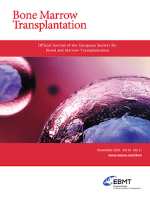
BONE MARROW TRANSPLANTATION
Scope & Guideline
Connecting Researchers to Transform Transplantation Practices.
Introduction
Aims and Scopes
- Hematopoietic Stem Cell Transplantation (HSCT):
The journal emphasizes research on the efficacy, safety, and outcomes of HSCT for various hematological disorders, including leukemia, lymphoma, and myelodysplastic syndromes. This encompasses studies on conditioning regimens, donor selection, and post-transplant care. - Graft-versus-Host Disease (GVHD):
A significant part of the journal's focus is on the prevention, diagnosis, and treatment of GVHD, a common complication following HSCT. This includes exploring novel prophylactic strategies and therapies for managing acute and chronic GVHD. - Innovative Therapies and Techniques:
Research on novel cellular therapies such as CAR-T cell therapy, as well as advancements in immunotherapy and targeted therapies, is frequently published, reflecting the journal's commitment to integrating new treatment modalities into clinical practice. - Infectious Complications and Management:
The journal addresses the challenges of infectious complications in HSCT recipients, including the management of viral reactivations (e.g., CMV, EBV) and bacterial infections, highlighting the importance of prophylactic strategies and treatment protocols. - Patient-Centered Care and Quality of Life:
Studies examining the psychosocial aspects, quality of life, and long-term outcomes of patients undergoing HSCT are also a critical focus, emphasizing the holistic approach to patient care.
Trending and Emerging
- Post-Transplant Cyclophosphamide (PTCy):
There is a growing body of research dedicated to the use of PTCy as a prophylactic treatment in haploidentical stem cell transplantation, highlighting its effectiveness in reducing GVHD and improving transplant outcomes. - CAR-T Cell Therapy:
The ongoing exploration of CAR-T cell therapy in various hematological malignancies, particularly in relapsed or refractory cases, is a prominent theme, showcasing its integration into transplantation protocols. - Patient Engagement and Quality of Life Research:
An increasing focus on patient-reported outcomes and quality of life in HSCT recipients signifies a shift towards more patient-centered research, emphasizing the importance of psychosocial factors in treatment success. - Microbiome Research in Transplantation:
Emerging studies investigating the role of gut microbiota in transplant outcomes and GVHD are gaining traction, reflecting a broader interest in the interplay between microbiome health and patient recovery. - Use of Advanced Imaging and Biomarkers:
The integration of advanced imaging techniques and biomarker research to predict outcomes post-transplantation is becoming more common, enhancing the ability to tailor treatments to individual patient needs.
Declining or Waning
- Traditional Conditioning Regimens:
There is a noticeable decrease in studies focused solely on traditional myeloablative conditioning regimens as researchers increasingly explore reduced-intensity and non-myeloablative approaches, which are becoming more favored in practice. - Single Donor Transplantation Studies:
Research focusing on single donor transplantation models, particularly in less diverse donor settings, is becoming less common as the field shifts towards exploring haploidentical and mismatched donor strategies, which are gaining traction. - Basic Science Studies on Stem Cell Biology:
There seems to be a waning interest in basic science research solely focused on stem cell biology without direct clinical applications, as more research is geared towards translational studies and clinical outcomes. - Longitudinal Studies with Limited Sample Sizes:
The frequency of longitudinal studies with small sample sizes appears to be decreasing, as there is a growing emphasis on larger, multicenter studies that offer more robust data and generalizable findings.
Similar Journals

ANNALS OF HEMATOLOGY
Fostering interdisciplinary dialogue in hematology and medicine.ANNALS OF HEMATOLOGY, published by Springer in Germany, stands as a premier platform for advancing knowledge in the field of hematology and medicine at large. With a significant impact factor and recognized rankings—Q2 in Hematology and Q1 in Medicine (miscellaneous) as of 2023—this journal is pivotal for researchers, clinicians, and students who are keen on exploring the latest developments in blood disorders, treatments, and innovative methodologies. Its broad scope encompasses original research, reviews, and discussions that aim to foster interdisciplinary dialogue, ensuring that the latest findings and theories are accessible to the scientific community. Although not an open-access journal, its rigorous peer-review process guarantees high-quality contributions, thereby solidifying its reputation as a vital resource in the hematological field. Founded in 1991, the ANNALS OF HEMATOLOGY continues to evolve, converging invaluable insights from both basic and clinical research until 2024. For those dedicated to improving patient outcomes and advancing hematological science, this journal remains an essential reference.

Transplantation and Cellular Therapy
Empowering Discoveries in Cell Biology and Molecular Medicine.Transplantation and Cellular Therapy is a leading journal published by Elsevier Science Inc, dedicated to advancing the fields of transplantation, immunology, cell biology, and molecular medicine. With its ISSN of 2666-6375 and E-ISSN 2666-6367, this journal serves as a vital resource for researchers, practitioners, and students aiming to stay at the forefront of innovative therapies and clinical practices in transplantation. As of 2023, it holds an impressive Q1 ranking in multiple categories, including Cell Biology, Hematology, Immunology and Allergy, Molecular Medicine, and Transplantation, reflecting its high impact and relevance in the scientific community. The journal, operating from its base in the Netherlands, supports Open Access publishing to enhance the dissemination and accessibility of groundbreaking research. Acknowledging the significance of transplantation and cellular therapies in modern medicine, Transplantation and Cellular Therapy is poised to propel future discoveries and developments in these critical domains.

Mediterranean Journal of Hematology and Infectious Diseases
Unlocking insights in hematology and infectious diseases for global health.Mediterranean Journal of Hematology and Infectious Diseases is a distinguished open access journal published by MATTIOLI 1885, dedicated to advancing the field of hematology and infectious diseases. Since its inception in 2009, the journal has provided a platform for researchers and practitioners to disseminate innovative findings, foster scholarly discourse, and enhance our understanding of these critical medical disciplines. With an impact factor reflecting its scholarly influence, it is recognized in the Q3 quartile for both Hematology and Infectious Diseases categories as of 2023. The journal's commitment to open access ensures that high-quality research is accessible to a global audience, contributing to the improvement of clinical practices and public health. Located in Fidenza, Italy, the journal continues to support converged research efforts from 2010 to 2024, making it an essential resource for academics, clinicians, and students in the medical community.
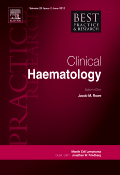
BEST PRACTICE & RESEARCH CLINICAL HAEMATOLOGY
Empowering Healthcare through Hematology ResearchBEST PRACTICE & RESEARCH CLINICAL HAEMATOLOGY is a leading academic journal published by ELSEVIER SCI LTD, dedicated to advancing knowledge in the field of clinical hematology. Since its inception in 1999, the journal has provided a platform for high-quality research, offering insights that bridge the gap between clinical practice and breakthrough scientific discoveries. With its significant standing, the journal has garnered a Q2 ranking in both Clinical Biochemistry and Oncology as of 2023, indicating its influence and authority within these domains. Although it does not operate under an open-access model, BEST PRACTICE & RESEARCH CLINICAL HAEMATOLOGY remains essential for researchers, healthcare professionals, and students looking to stay informed about the latest developments in hematological science. The journal's rigorous peer-review process and commitment to publishing innovative studies make it a cornerstone resource for anyone invested in clinical hematology and related fields.

Iraqi Journal of Hematology
Pioneering Discoveries in HematologyIraqi Journal of Hematology is a prominent peer-reviewed open-access journal dedicated to advancing the field of hematology. Published by Wolters Kluwer Medknow Publications, this journal provides a platform for researchers, professionals, and students to share cutting-edge findings and developments in various aspects of hematology, including blood diseases, diagnostics, and innovative treatments. Since its transition to open access in 2016, the journal has significantly increased its reach, allowing for wider dissemination of critical research to a global audience. With an ISSN of 2072-8069 and an E-ISSN of 2543-2702, the Iraqi Journal of Hematology strives to adhere to the highest scholarly standards and plays a vital role in the ongoing discourse in hematological research. Researchers are encouraged to contribute to this essential resource for the scientific community, contributing to the advancement of knowledge that ultimately improves patient care and treatment outcomes.
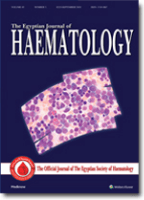
Egyptian Journal of Haematology
Empowering Hematologists with Cutting-Edge ResearchThe Egyptian Journal of Haematology, published by WOLTERS KLUWER MEDKNOW PUBLICATIONS, stands as a pivotal resource in the field of hematology, particularly within the context of Egypt and the broader Middle Eastern region. This journal is dedicated to disseminating high-quality research that explores the latest advancements in blood disorders, hematologic malignancies, and transfusion medicine. With a focus on original research, case studies, and reviews, it aims to provide a comprehensive platform for hematologists, researchers, and healthcare professionals to enhance their understanding and management of hematological conditions. Although it is not an open-access journal, the rigorous peer-review process ensures that only the most impactful studies are published, contributing to the journal's reputation in the academic community. The Egyptian Journal of Haematology serves as an essential tool for advancing knowledge, improving clinical outcomes, and fostering collaboration among experts in the field.

INTERNATIONAL JOURNAL OF HEMATOLOGY
Delivering Cutting-Edge Findings in HematologyThe INTERNATIONAL JOURNAL OF HEMATOLOGY, published by SPRINGER JAPAN KK, serves as a critical platform for advancing research in the field of hematology. With a prestigious history spanning over three decades from 1991 to 2024, this journal is recognized for its impactful contributions, evidenced by its Q2 category ranking in Hematology for 2023, and its notable position at rank #71 out of 137 in the Scopus Medicine Hematology category. Researchers and professionals within the hematology community benefit from the journal's rigorous peer-reviewed articles that cover a wide range of topics, including clinical studies, basic research, and novel therapeutic strategies. Though currently non-open access, it provides essential insights and findings to an audience passionate about the latest advancements in blood disorders and treatments. Situated in Japan, the journal not only showcases high-quality research but also fosters a global exchange of knowledge in hematology, making it a significant resource for scholars, practitioners, and students alike.

Hematologie
Connecting Researchers and Clinicians in HematologyHematologie is a highly regarded journal in the field of hematology, published by JOHN LIBBEY EUROTEXT LTD. With an ISSN of 1264-7527 and an E-ISSN of 1950-6368, this journal has established itself as a vital resource for researchers, clinicians, and students dedicated to advancing the understanding of blood disorders and treatments. Although the journal's coverage in Scopus was discontinued in 2018, it has continually provided invaluable insights and research findings. The journal aims to foster knowledge sharing and discussion in hematology, exploring innovative methodologies and emerging trends in the field. With a commitment to quality research, Hematologie remains an essential platform for disseminating critical findings that can drive clinical practice and influence future studies in hematological sciences.
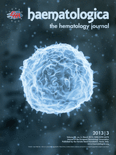
HAEMATOLOGICA
Advancing Hematology: Where Research Meets ImpactHAEMATOLOGICA, published by FERRATA STORTI FOUNDATION, is a prestigious journal in the field of hematology, recognized for its high impact and contribution to advancing research in this critical area of medicine. With an impressive Q1 ranking in the 2023 category of Hematology and a notable Scopus rank of #12 out of 137, the journal serves as an essential platform for disseminating innovative studies, clinical trials, and comprehensive reviews from 1947 to 2024. Based in Italy, with a commitment to quality and academic integrity, HAEMATOLOGICA fosters collaboration among researchers, practitioners, and students interested in the latest developments and methodologies within hematological science. Although it does not offer open access, the journal ensures that valuable insights are accessible through institutional subscriptions, emphasizing its role in shaping the future of hematologic research.
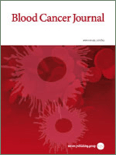
Blood Cancer Journal
Elevating standards in blood cancer studies.Blood Cancer Journal, published by SPRINGERNATURE, is a leading open-access journal that has been at the forefront of hematology and oncology research since its inception in 2011. With an impressive impact factor and a commitment to disseminating high-quality research, it holds a prestigious Q1 ranking in both hematology and oncology categories as of 2023. The journal is dedicated to publishing innovative studies, comprehensive reviews, and insightful commentaries that advance our understanding of blood cancers, making it an essential resource for researchers, healthcare professionals, and students in the field. Its open-access model ensures that groundbreaking research is accessible to a global audience, promoting collaborative efforts to enhance treatment methodologies and patient outcomes. With a strong reputation illustrated by its Scopus rankings—8th in hematology and 30th in oncology—Blood Cancer Journal exemplifies excellence and leadership in the ever-evolving landscape of cancer research.